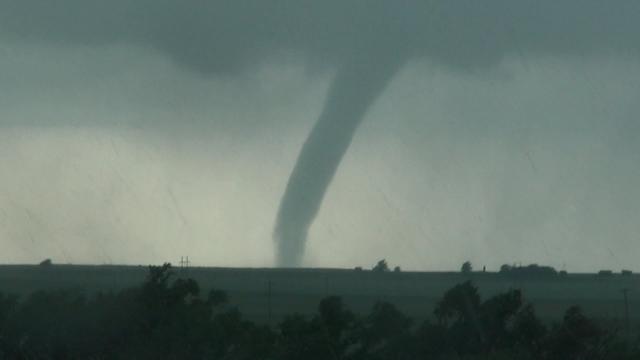Tornadoes aren’t hurricanes. Hurricanes are long-lasting, low-pressure swirls that follow somewhat predictable paths. But tornadoes can pop up and disappear in just a few minutes. It hasn’t been easy to give people fair warning about tornadoes, especially those folks caught in the crosshairs of violently-rotating columns of damaging, high-speed winds.
Image: Screengrab via Basehunters Chasing
But that could change one day, because the National Oceanic and Atmospheric Administration (NOAA) is now working on a model that can predict tornadoes hours in advance instead of minutes. Last week, the agency announced that it had tested its experimental Warn-on-Forecast model on a tornado outbreak in Oklahoma — and it was a success.
“I’m really excited about this new approach being tested by NOAA,” Bob Henson, Meteorologist from Weather Underground, told Gizmodo in an email. “Warn on Forecast is a very promising bridge between observations and computer models. It merges the two, with enough detail in time and space to determine if tornadoes are likely within a tightly defined area within an hour or so.”
Right now, the average lead time for a tornado warning is only 13 minutes, according to NOAA. Tornado predictions use various data streams, including data from Doppler radar, which records information on sound and light waves travelling through the air to find signature tornado-causing behaviour. But 13 minutes certainly isn’t enough time to prepare if you’re far from home, or in a huge crowd of people.
The new model test began on 16 May 2017, when NOAA issued a “Special Weather Statement” based on the model’s results in Western Oklahoma at 5:16 CDT. It wasn’t a tornado watch or warning — the storms were already in Texas at this point. Instead, it said, “Severe weather is likely with these storms as they move into Oklahoma and there is a high probability that tornado warnings will be issued.”
The statement did eventually turn into a tornado warning, and a twister finally touched down in Oklahoma around 6:45 CDT, according to The Weather Channel.
NOAA representatives say that Warn on Forecast combines high-resolution satellite, radar and surface data to create the model and update it every 15 minutes or so.
But NOAA also says the model requires further development and testing, and that a challenge remains to quickly communicate information to forecasters. The question also remains as to whether people will use the extra time to find shelter or not.
“Such notice could be a huge boon to public safety in places like malls and stadiums, where it takes time to evacuate,” said Henson. “But on the individual scale, people might be tempted to procrastinate before seeking shelter. We’ll need good social science research to understand how best to use these innovative new products.”
[NOAA]
